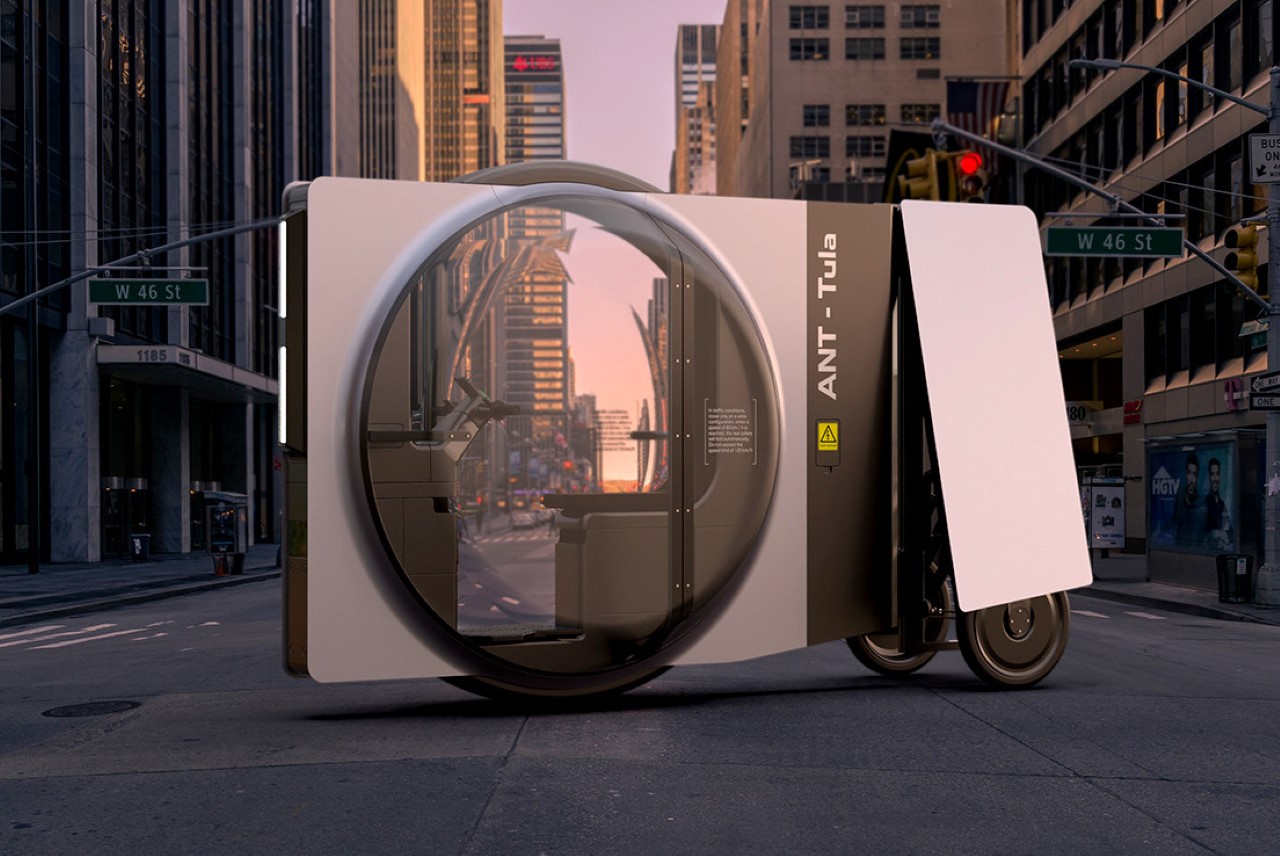
Ask anyone, even AI, to imagine a scooter and chances are you’ll NEVER come across something as avant-garde as this concept right here. Designed by Alexander Yamaev, this oddly eye-catching tricycle scooter concept comes with a rectangular side profile that slices through the air the way a credit card swipes through a payment machine, and a unique wheel setup featuring a massive front wheel that surrounds the scooter’s transparent bubble-shaped cockpit, and two rear wheels that separate at low speeds for stability, and unite at high speeds for maneuverability. The ideas that Yamaev’s concept present are certainly radical, with a design so groundbreakingly unique it’ll make the Cybertruck look outdated.
Designer: Alexander Yamaev
Broadly, the concept can be broken down into its three most unique aspects – the shape, the wheels, and the cockpit. As far as the concept’s shape goes, there’s nothing quite like it. It’s eye-catching in a way that seems hyper-modern, but I’ll be absolutely candid – I don’t DISLIKE it. It looks fun, futuristic, and like something that I could see in an urban metropolis. Does it lack character because of its boxy design? If the streets were filled with hundreds of these, I’d argue they’d look less appealing or individualistic… but then again, these scooters feel like a public utility more than a personal vehicle. I’d imagine this being the new rental bike that people can pick up and drop off anywhere. That’s just how I feel.
The wheels present an interesting deviation from the ordinary. While most scooters come with two equal-sized wheels, Yamaev’s concept has no such limitation. The scooter’s wheel layout features a unique arrangement of three wheels – a larger one in the front, and two smaller ones at the back… almost like a tricycle version of a ‘penny farthing’. The larger wheel measures an estimated 6 feet in diameter, fitting an entire closed cockpit inside it, while the two smaller wheels at the back separate at slow speeds or when the scooter’s parked (so you don’t need a stand) and come closer together as the scooter picks up speed to offer aerodynamism and easy maneuverability.
The concept’s cockpit remains a feature that I simultaneously love and hate. The enclosed bubble design feels inspired, and solves a major problem with two-wheelers – bad weather. Sitting in the comfort of a chair in a closed cockpit just makes the idea of riding in the rain or a blizzard more comfortable. An enclosed space means the scooter can have its own air conditioning too, for hot days. However, there are two rather major caveats here. Firstly, a tight, enclosed space is bound to give a significant chunk of people claustrophobia. There aren’t any windows on the scooter, which exacerbate the problem. The second problem, and arguably the more pressing one, is the fact that the scooter’s design essentially obscures the front view of the rider. Sure, the bubble cockpit really offers a panoramic view on the sides, but the scooter’s design (and that wheel) obstruct the front view of the rider, making it very difficult to drive forward with certainty. Sure, Yamaev obviously thought of this while designing his concept, he included a large portrait display right in front of the driver that gives them a front-facing view of everything ahead of the scooter. I can think of a lot of scenarios in which this would be less than ideal. Seeing digital elements on screen isn’t really as good as actually seeing them in real life. Screens have latency, will sometimes distort colors, and most importantly, are prone to failure. However, they aren’t entirely inconceivable. They work better in the dark, offering clearer views than your eyes can see.